Echinophthiriidae
Seal lice
Emilie Bess and Kevin P. Johnson


This tree diagram shows the relationships between several groups of organisms.
The root of the current tree connects the organisms featured in this tree to their containing group and the rest of the Tree of Life. The basal branching point in the tree represents the ancestor of the other groups in the tree. This ancestor diversified over time into several descendent subgroups, which are represented as internal nodes and terminal taxa to the right.

You can click on the root to travel down the Tree of Life all the way to the root of all Life, and you can click on the names of descendent subgroups to travel up the Tree of Life all the way to individual species.
For more information on ToL tree formatting, please see Interpreting the Tree or Classification. To learn more about phylogenetic trees, please visit our Phylogenetic Biology pages.
close boxIntroduction
Echinophthiriidae are medium-to-large lice and are parasites of aquatic carnivores in the Pinnipedia (seals, walruses, and sea lions) and Mustelidae (river otters).
The five genera in the family Echinophthiriidae contain a total of ten species.
Characteristics
- Medium to large Anoplura.
- Body usually beset with distinct spiniform, scale and/or peg-like setae.
- Posterior margin of head rimmed by long setae.
- Thorax with mesothoracic phragmata connected across the dorsum, usually enclosing a notal pit.
- Sternal plate absent. Meso- and metathoracic legs well developed and of similar size bearing a distinct, blunt pretarsal claw.
- Tibial thumb elaborate.
- Abdomen membranous bearing six small spiracles of similar size with a distinct tubular atrium.
- Male external genitalia large and well developed with a distinct basal apodeme and parameres.
- Male and female subgenital plate weakly developed.
Host Associations
Echinophthiriidae species are parasites on river otters, seals, walruses, and sea lions.

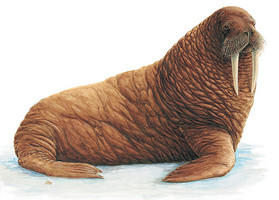
Walrus (Odobennus rosmarus), host of Antarctophthirus trichechi.
© 2003 Jon B. Hlidberg

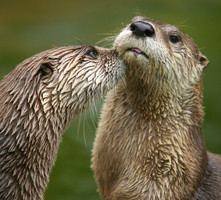
River otter (Lontra canadensis), host of Latagophthirus rauschi.
© 2005 Dmitry Azovtsev

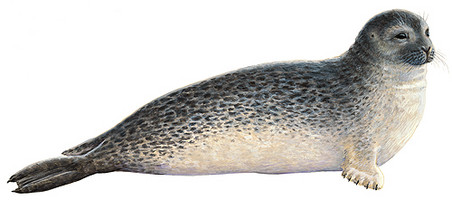
Harbor seal (Phoca vitulina), host of Echinophthirius horridus.
© 2003 Jon B. Hlidberg
References
Durden, L. A. and G. G. Musser. 1994. The mammalian hosts of the sucking lice (Anoplura) of the world: a host-parasite list. Bulletin of the Society for Vector Ecology 19: 130-168.
Price, M. A. and O. H. Graham. 1997. Chewing and sucking lice as parasites of mammals and birds. US Department of Agriculture Technical Service Bulletin No. 1849, 309 pp.
Title Illustrations

| Scientific Name | Echinophthirius horridus |
|---|---|
| Specimen Condition | Dead Specimen |
| Identified By | V. S. Smith |
| Life Cycle Stage | nymph, 2nd stage |
| Copyright | © British Museum of Natural History, London |
About This Page
Emilie Bess

Illinois Natural History Survey, Champaign, Illinois, USA
Kevin P. Johnson

Illinois Natural History Survey, Champaign, Illinois, USA
Correspondence regarding this page should be directed to Emilie Bess at and Kevin P. Johnson at
Page copyright © 2006 Emilie Bess and Kevin P. Johnson
All Rights Reserved.
- First online 11 October 2006
- Content changed 11 October 2006
Citing this page:
Bess, Emilie and Kevin P. Johnson. 2006. Echinophthiriidae . Seal lice. Version 11 October 2006 (under construction). http://tolweb.org/Echinophthiriidae/13661/2006.10.11 in The Tree of Life Web Project, http://tolweb.org/




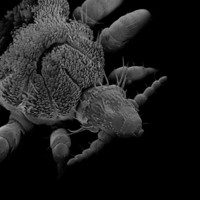
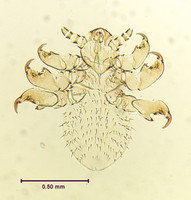
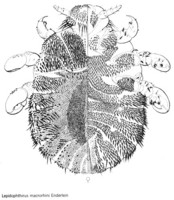
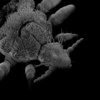



 Go to quick links
Go to quick search
Go to navigation for this section of the ToL site
Go to detailed links for the ToL site
Go to quick links
Go to quick search
Go to navigation for this section of the ToL site
Go to detailed links for the ToL site